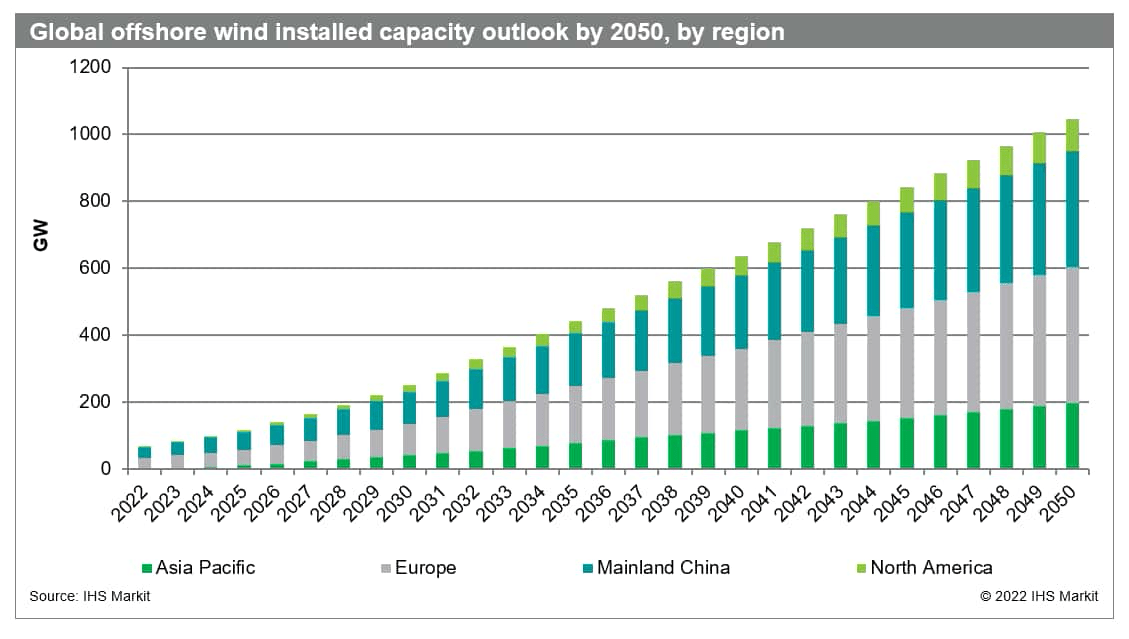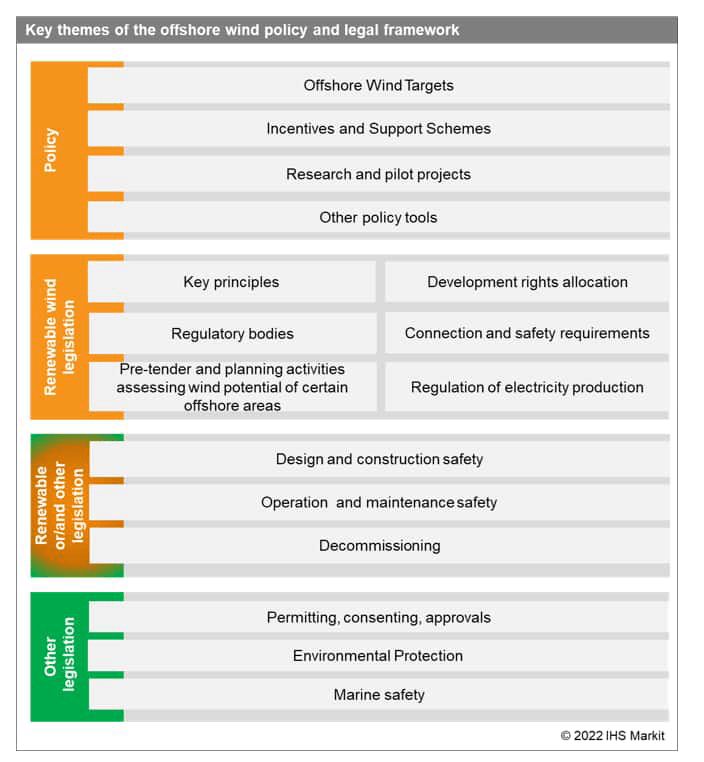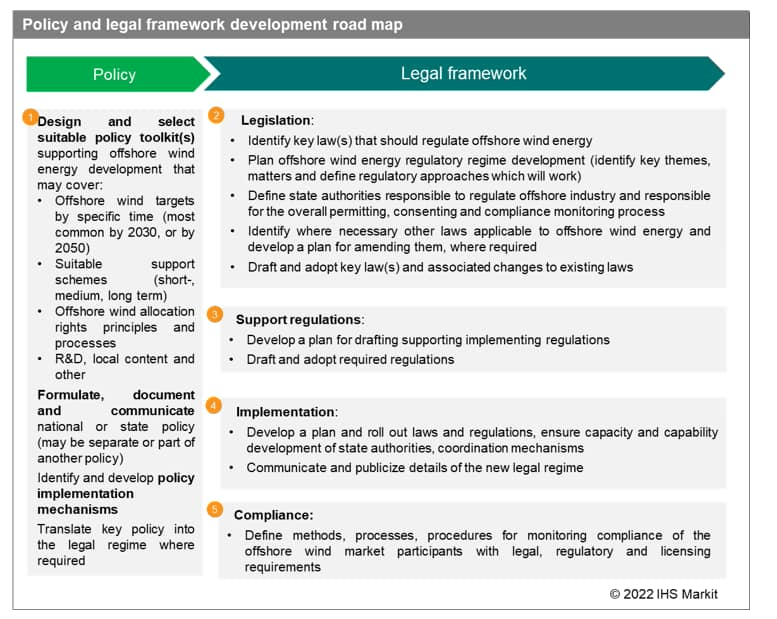KanawatTH/iStock via Getty Images
According to IHS Markit research and as confirmed by the International Renewable Energy Agency (IRENA) and Global Wing Energy Council (GWEC), wind power is one of the fastest-growing renewable energy technologies. Its usage is on the rise worldwide. Global installed wind-generation capacity onshore and offshore has increased by a factor of almost 75 in the past two decades, jumping from 7.5 gigawatts (GW) in 1997 to some 823 GW in 2021. Furthermore, in recent years, offshore wind has proven its maturity with drastic cost reductions and a rapid pace of deployment in the markets of northern Europe and mainland China.
Nearly 55 GW of the offshore wind capacity was installed globally by the end of 2021 with a record 20 GW of new additions, primarily made by mainland China, which added 16.9 GW. With dramatic cost reductions, advances in technology, favorable policies, and ever-increasing national targets, offshore wind gross capacity is expected to grow by almost 190 GW by 2030.

Figure 1: Global offshore wind installed capacity outlook by 2050, by region
Policy plays a critical role in encouraging and supporting development of the offshore wind, since at present the economics of the offshore wind is challenging on a purely commercial basis in many countries. Offshore wind targets, support schemes, well designed rights allocation processes, research schemes, among others are important elements of the policy toolkit that focuses specific efforts on the offshore wind energy development. Additionally, an offshore wind industry development requires a stable and predictable legal and regulatory framework that clearly translates the policy into an operational model for the industry.
National legal framework applicable to the offshore wind energy typically represents an evolving nature of the earlier adopted energy policies, reflects the current status of the industry as well as aspirations and priorities for future developments in conjunction with other renewable energy priorities.
Main provisions governing development of the offshore wind are contained in the renewable energy or in the dedicated (offshore) wind energy legislation. In addition to that, other laws and supporting regulations regulate this industry and create obligations requiring compliance of the wind energy developers. The important key themes of the offshore wind policy and legal framework are summarized in the figure below:

Figure 2: Key themes of the offshore wind policy and legal framework
Offshore wind requires stability and support from national and local governments to accelerate deployment, therefore risks associated with sudden changes in legislations, approval processes, or support mechanisms need to be carefully managed to avoid unnecessary uncertainty and slowing of the sector development.
To this end, the high-level indictive road map, illustrated below, aims at providing governments with key steps in elimination and management of such risks and development of suitable policy and appropriate legal framework:

Figure 3: Policy and legal framework development roadmap
International and national aspirations and targets will drive anticipated growth in wind energy and countries need to put in place a cohesive and clear legal framework to facilitate industrial development throughout the project’s life-cycle. To this end, an understanding of best practices accumulated to date, benchmarking and lessons learned is an important element.
Editor’s Note: The summary bullets for this article were chosen by Seeking Alpha editors.


Be the first to comment